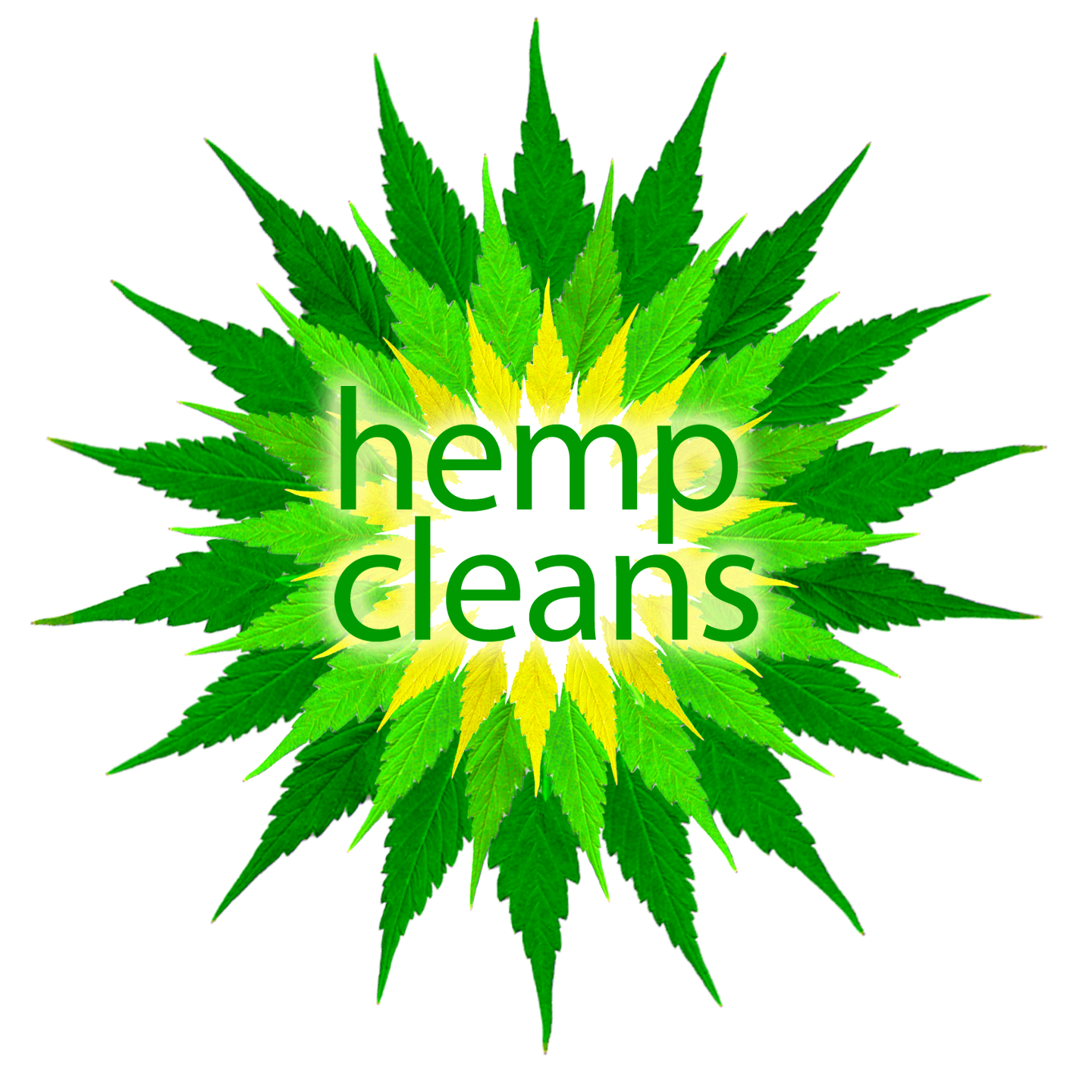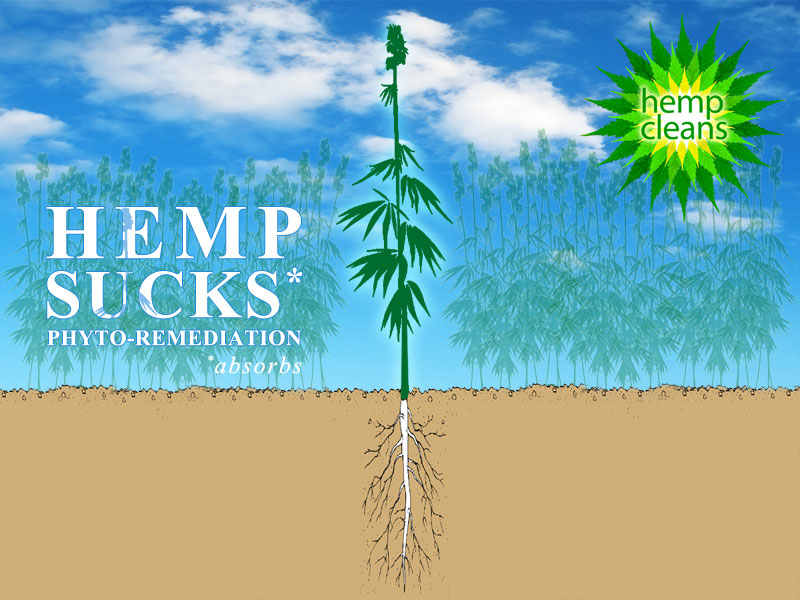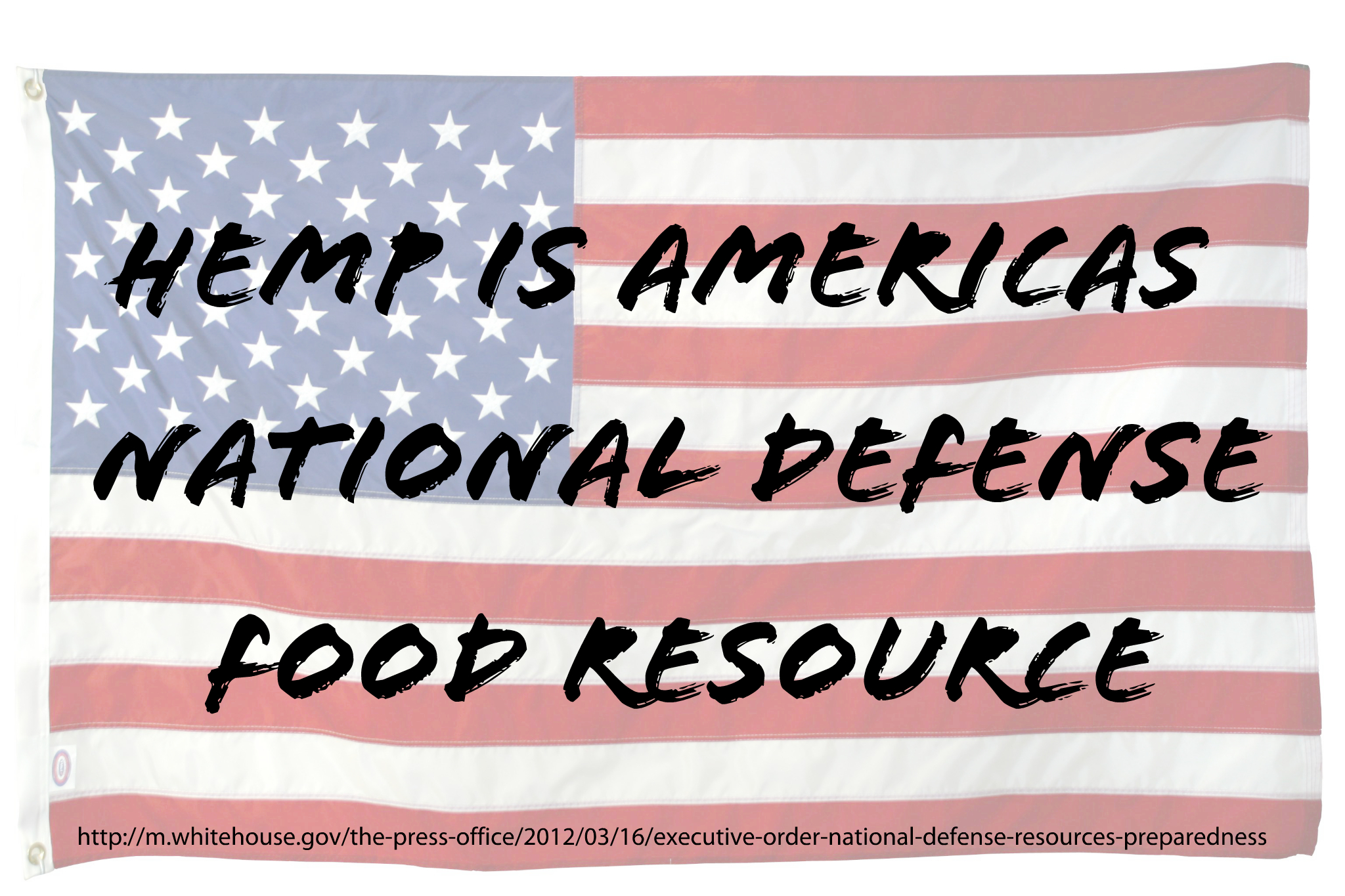By Jason Lauve, Mr. Hemp
Hemp cleans by sucking all kinds of things from the soil, water, and air. The plant can uptake things from the soil, including good nutrients needed for a healthy plant to grow, carbon sequestration from the air, water filtration, and also heavy metal contamination from chemical fertilizers, sewage runoff, and other more serious levels of harmful substances. Will those contaminants end up in our food and medicine? In short, no. Is this something that everyone can do at home, yes and no.
For agricultural uses and the average horticultural garden, growing Cannabis/hemp is most likely safe and beneficial to the environment, but if the area is unknown or has a nefarious history, then please make sure to have the proper soil testing done and understand what the results mean before making big changes to your garden. For the purpose of this article, we recognize that hemp, Cannabis Sativa L, and marijuana are all the same plant.
Plant vegetation and soils work with microorganisms and other beneficial fungi and life that naturally live in the soil. The plants and microbes often use excess nutrients as their food source. In addition, nutrients such as nitrates are naturally converted to nitrogen gas through a microbial process called denitrification, and phosphates are absorbed by growing plants and organisms or trapped in the sediment as these plants decay. Unfortunately, the synthetic nitrogen that is in chemical fertilizers is actually harming the soil.
The soil system is hemorrhaging.
Hemp is a multi-use plant and for many thousands of years, the plant has always been an important source of food, fiber, oils, and medicinal uses.
There is a great concern about how remediation with hemp plants will work, but few are actually addressing the specifics and the functions of the 6 different mechanisms of phytoremediation. It is more complex than just putting a seed in the ground and letting it grow.
Introduction
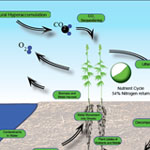
The unique physiological and chemical characteristics of Cannabis/hemp make it ideally suited for such applications within the overall objective of climate mitigation. When used in a developed plan, Cannabis Sativa L., can have a direct impact on several of the key land-use/management issues and consumption related contributions to the climate. It is concluded that Cannabis cultivation and the implementation of this crop could be environmentally and economically viable as a method for addressing the human relationship with our climate, including an understanding of erosion, over-fertilization, and damaged soils, now just dirt.
In addition, we must comprehend the relationships of other supportive infrastructure. Today, with the technical tools that are available, there is an opportunity to utilize the massive amounts of data and determine a sustainable and comprehensive integration of all inputs to achieve the best and safest solutions.
The hemp plant (Cannabis sativa L.) provides a good alternative for soil remediation because it has high above-ground biomass with deep roots contributing to its high RUE, radiation use efficiency. Hemp is very effective at growing quickly. The plant also removes many compounds from the soil including Cadmium, Aluminum, Cobalt, Copper, Nickle, Zinc, Iron, Manganese, Lead and Chromium along with chemical compounds. When the soil is maintained with microbial life these functions are even stronger with abundant growth. What do these materials do and where does all this come from? Some of the absorbing material can be beneficial to our health, but others can be dangerous.
One of the dangerous common contaminants in the soils around us is Cadmium, of which roughly 83 percent of mined cadmium is used in rechargeable nickel-cadmium batteries and can be found in cell phones, cordless power tools, cameras, computers, photovoltaic devices, and in emergency power supplies and lights. We can encourage each other to close the loop and make sure these materials stay out of our living soil systems and take local responsibility for the water around us.
When evaluating an area for remediation, it is critical to take into consideration the upstream contamination into the area and understand the entire watershed. In the current system we tolerate and contribute to heavy metal contamination of agricultural soils, including industrial and traffic emissions, and deposition from town wastes, much if it is mineral-rich sewage.
Using science and accessible technologies to utilize data of topology, soil conditions, river basins, in addition to hundreds of other data points; the identification and integration of zones of contamination, erosion, and other environmental impacts will enable a comprehensive plan of utilizing phytoremediation to clean with hemp and other applications, stabilizing the environment around us.
You can take action now to help to remediate the damage done to our environment. For example, we can benefit by covering bare soil with plants or use hemp mulch to reduce the risk of contamination and erosion. By slowing the flow of water it reduces the amount of erosion and allows more time for the water to filter through local areas, such as wetlands function similar to the kidneys in our body and when they function properly, they are a filter for water and wastes around our planet.
As the growth of hemp expands into different markets, especially with its use as a remediator of soil, water, and air, there will be many issues that will need to be addressed and using science as a basis for definitions, testing and research is critical and safety is primary. We don’t want to cause any harm, but to heal. Remediation may be conducted in surface soils and in contaminated water and areas of spills where hemp may be used as a treatment. Both the growing plant and products made from the fibers can be used in remediation projects.
Categories of Safety
Identifying three basic categories for using cannabis plants which have been used for remediation which delineate if the plant is for Human and animal use, Industrial use including clothing and household uses, and uses that would be excluded from human use, yet may have a value function for use in environmental stabilization processes and products.
In the USA alone, the cost of cleaning up all the sites contaminated with toxic and radioactive metals is estimated to be close to $1 Trillion. The problem is even more acute abroad, particularly when large areas are contaminated with radionuclides, for example, areas surrounding the Chernobyl nuclear reactor. There are also areas of farmland that have been taken out of service, which may benefit from a remediation and resuscitation project to improve those areas to be used again for food and fiber production. But the cost of not taking action will have costly effects on dozens of generations to come.
Remediation using hemp

Phytoremediation is a cost-effective, non-intrusive, and aesthetically pleasing technology, that uses plants to sequester elements and compounds from the environment to metabolize various molecules in their tissues. Plants such as Cannabis, that accumulate heavy metals and are more resistant to the soil and aerosol pollution are hearty enough to remediate many environmental stresses. Other plants that we use for food are also resistant to increased heavy metals concentration in the soil, these are corn, wheat, barley, sunflower, and hemp.
Some communities and gardens are established in areas that served a different purpose historically. If the site was an industrial/manufacturing area or site of a demolished building, contaminants may be present. There are ways that hemp cleans contaminated soil, but you should test your soil first.
If you don’t know about your soil and water, please make sure to do tests, Do not burn your hemp. As an extreme example, in Colorado, radioactive particles have been found. For the general public, appropriate soil testing should be done and understand what the results mean before taking on a remediation project in unfamiliar areas.
Due to its great potential as an alternative to traditional contaminated land remediation methods, a complete understanding of the movement of water underground, phytoremediation, and its metal uptake, translocation mechanisms, amendments such as mycorrhizal or ethylenediamine-disuccinic acid, and other external effects is needed for the full-scale application of hemp.
A plan is highly recommended for any planting for remediation and an exit plan may be required to deal with the plant waste. Landfilling, product development, captured incineration, incorporation, and composting are options to dispose of or recycle the metals and other captured compounds.
Proper testing of the plant tissue, leaves, roots, etc., can determine if the plant tissue is a hazardous waste so that the ultimate disposal of the plant waste is properly mitigated.
Successive planting and harvesting of plants may be repeated as necessary to bring soil contaminant levels down to acceptable limits.
There are six primary ways that plants are used in phytoremediation:
Types of Phytoremediation
1 Phytoaccumulation, also called phytoextraction, pulls out or accumulates contaminants in the soil through the plant roots into other parts of the plants.
The disaster of the nuclear meltdown of Chernobyl is an example where Cannabis/hemp was used to determine its effectiveness as a Phytoaccumulator of Cesium 137 and Strontium from the soil. These are both highly dangerous heavy metals that are left behind after a criticality accident or explosion of nuclear material.
2 Phytodegradation or phytotransformation is the breakdown of contaminants by the plant and within the plant. Some contaminants are degraded, used as nutrients, and incorporated into plant tissues.
There are some cases where products are re-released to the environment depending on the contaminant and plant species and this is another reason for a comprehensive understanding of the plant and how it will be used.
3 Phytostabilization is the use of a plant to immobilize contaminants in soil and groundwater, as well as physical stabilization of soils via the root structure and strong stalks. This can be used to re-establish a vegetative cover at locations where natural vegetation is lacking due to high metal concentrations.
Metal-tolerant species may be used to restore vegetation to such sites, thereby decreasing the potential migration of contamination through wind erosion, transport of exposed surface soils, and leaching of soil contamination to groundwater.
4 Phytovolatilization is the uptake and transpiration of a contaminant by a plant, with the release of the contaminant or a modified form of the contaminant to the atmosphere from the stoma of the plant.
This occurs as plants take up water and organic and inorganic contaminants.
5 Rhizodegradation or phytostimulation is the breakdown of contaminants in the soil through the microbial activity that is enhanced by the presence of the rhizosphere. Microorganisms (yeast, fungi, and/or bacteria) such as mycorrhizal consume and degrade or transform organic substances for use as nutrient substances.
Certain microorganisms can degrade organic substances such as fuels or solvents that are hazardous to humans and convert them into harmless natural substances released by the plant roots—such as sugars, alcohols, and acids which contain organic carbon that act as nutrient sources for soil microorganisms, and the additional nutrients stimulate their activity.
6 Rhizofiltration is the adsorption or precipitation of contaminants into plant roots when contaminated water is diverted and brought in contact with the plants and floated in the contaminated water. The plants are harvested and disposed of as the roots become saturated with contaminants.
Food choice and safety
It is necessary to pay attention, above all, to how the Cannabis plant moves various minerals and molecules through its structures. The ability of the plant to absorb heavy metals and other contaminants, making it critical to identify and understand where they end up in the plant.
Distribution of the heavy metals along the plant axis of hemp are decreasing in the following order: roots > stems > leaves > seeds> inflorescences (flowers). Except for roots, the highest concentrations are found in leaves, whereas the lowest are typically observed in seeds and flowers.
Hemp cleans the contamination and stores it in different parts of the plants roots, stem, and leaves. Cannabis seeds appear to have evolved into a filter to provide a clean and healthy source of food in most areas where it grows.
Hempseed has unique nutritional properties and is recognized as one of the most nutritionally complete food sources. No other single plant source has a full amino acid spectrum in such an easily digestible form, nor has the essential fatty acids in as perfect ratio to meet human nutritional needs and has an impressive trace mineral content as well. Hempseed’s properties have long been recognized and valued as food for both humans and domesticated animals throughout Asia, India, Russia, and Eastern Europe, North America is relatively new to recognizing the values of Cannabis/hemp. [06]
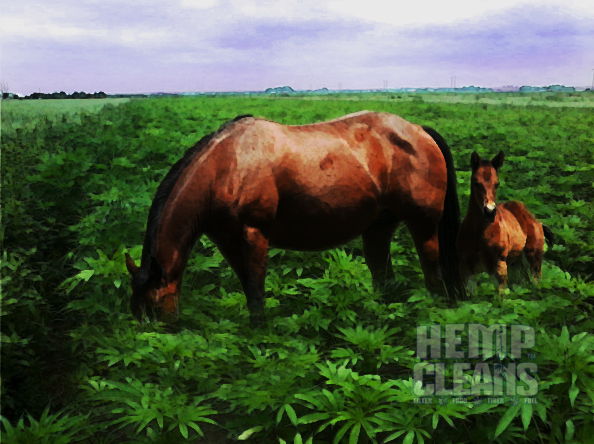
Cattle, poultry, and swine may benefit from as little as 5% of their feed is supplemented with Cannabis/hemp seed, resulting in healthier and higher quality foods and improved rumen function with less methane. Grazing sprouts of Cannabis can be both beneficial to the animals and the biota of the soil. Through better nutrition and grazing of animals, it is possible to see a large effect on methane, CH4, emissions and a possible reduction of up to 75% [23]. Grazing animals using young plants such as hemp sprouts may offer another piece to the sequestration of carbon back into our soils and reduce CH4 production. By offering fresh grazing plants that have higher amounts of easily fermentable carbohydrates will alter the fermentation pathway because hemp sprouts offer a high digestibility and passage rate [24].
Certification and atavism
Certification of seed is claimed to protect farmers by “guarantee” that the seeds will stay below the arbitrary THC level of 0.3%, but there is a major flaw in this approach. Nature does not listen to politics or Associations, but only to its own biological behavior, including atavism. The Cannabis/hemp plant changes when seeds harvested in one location are grown in a different latitude and climate zone. This is a major factor when choosing a variety that has to fit the artificial box of certification.
In addition to the natural behavior of Cannabis/hemp, the arbitrary use of THC as a defining value for the plant also has major flaws to it. First, is the fact that the scientist who came up with the 0.3%, Dr. Ernest Small from Canada, admits in his choice was arbitrary and has no foundation in science. Going further down the rabbit hole, we can also see that science demonstrates that THC is a degradation, specifically a decarboxylation of THCa. In other words, THC is manufactured by heating THCa and THCa is non-psychoactive. This problem is similar to saying that an apple makes alcohol, which is insane and we know apples are not illegal. To make things even worse, what the false definition does, is exclude many uses and people from utilizing Cannabis/hemp for its benefits as we are demonstrating with phytoremediation, where THC should not be the limiting factor preventing the plant from being used to alleviate contamination in our environment. It also should not limit the use of fabrics, building materials, and other valuable benefits for our planet Earth.
The reason to limit THC is to give control to a select few who want to continue the Drug War for money, power, and manipulation of science. To take this into current law, the 9th circuit court in the 2004 decision for the HIA versus DEA case concluded that:
The DEA’s Final Rules purport to regulate foodstuffs containing “natural and synthetic THC.” And so they can: in keeping with the definitions of drugs controlled under Schedule I of the CSA, the Final Rules can regulate foodstuffs containing natural THC if it is contained within marijuana, and can regulate synthetic THC of any kind. But they cannot regulate naturally-occurring THC not contained within or derived from marijuana-i.e., non-psychoactive hemp products-because non-psychoactive hemp is not included in Schedule I. The DEA has no authority to regulate drugs that are not scheduled, and it has not followed procedures required to schedule a substance.
Remediation and environmental stabilization
Fermentation and dewatering are the basic steps of sewage sludge treatment for their natural use. The fermentation modifies the physical, chemical and biological properties of sewage sludge, reduces pathogenic threat and offensive smell. It also regulates organic carbon to nitrogen quantity ratio and simplifies the dewatering of sewage sludge. Proper treatment and cultivation make sewage sludge a useful product.
Results from an experiment with hemp plants where it was demonstrated that hemp phytoextracts zinc, copper, and nickel and resulted in a thirty-fold reduction of zinc, thirty-fivefold reduction of copper and a tenfold reduction of nickel in sewage farms. It is a way to transform waste into an ecological productive use. The content of heavy metals is a barrier to the natural use of sewage waste from wastewater treatment plants and hemp used in sewage remediation farming may be a great fit in a system within the sewage plants.
Good minerals and bad metals
Whole hemp seed contains approximately 25 – 35% seed oil, 20 – 25% protein, 20 -30% carbohydrates and 10 -15% insoluble fiber, as well as a rich array of minerals, particularly phosphorus, potassium, magnesium, sulfur, and calcium, along with modest amounts of iron and zinc. Some of the trace elements absorbed by Cannabis/hemp, including iron, manganese, zinc, and copper are essential micronutrients for health with a variety of biochemical functions in humans and all living organisms.
Heavy metals are naturally present at low concentrations in agricultural soils. However, due to their widespread occurrence in products we use, the cumulative behavior and toxicity and heavy metal concentration can be a lot higher in soils. Research shows that hemp seeds are well below the levels established as critical for human consumption. Therefore, the heavy metal content of hempseeds consumed as snacks may not be considered a critical issue for human health. However, regular monitoring of heavy metals in hempseeds is advisable to prevent any potential risk in the future.
Expanded use
There may be an opportunity to use hemp for remediation, such as along the roadside and highways to absorb monoxides from the vehicles passing by. This will also address the transportation runoff which contains, rubber, oil and heavy metals including Cadmium during and after a rainstorm.
Using hemp to suck the heavy metal contamination from agricultural soils, erosion zones, drainage ways and used as filters, using both the living plant and absorption products to absorb and reassign the use to energy, nutrient farming or other sustainable use, is being recognized by the public and private sectors for environmental remediation, stabilization and rejuvenation programs.
For petroleum spills and clean up of Polycyclic aromatic hydrocarbons (PAHs), such as chrysene and benzo[a]pyrene are often the most hazardous components of oil spills. hemp (Cannabis sativa) has a very high tolerance. This is also an opportunity to use processed hurd (the short fiber) which has the lignin and hemicellulose removed to absorb oil spills and contamination.
In research, there is strong evidence that all elements detectable in the seeds are below detectable and within the limits of safety levels in all samples. For example, a highly hazardous element cadmium content in hempseeds was found within the safety levels for food. Of the monitored trace elements, the highest concentration found was of iron, manganese, and zinc with a range of 46 – 120 mg/kg-1), and the lowest concentration found was of cobalt, molybdenum, and nickel (0.06 – 1.66 mg/kg-1).
It is generally safe to say that the heavy metal contents of hempseeds are well below the critical levels established for safe human consumption. Within reason, we see that hemp seeds are a safe and essential food source for human nutrition and security. Of course, if it was grown in a location where radioactive materials are found, it will be prevented from ending up in the food chain.
In highly contaminated areas additional plant types and chelates may be used in conjunction with Cannabis/hemp.
Water
The movement of water is also an important concept to understand, as its flow between rocks, sand, clay, around buildings, capillary behavior and more all are affected by plants, lakes, streams, rainfall, aquifers, etc. Each location has to be evaluated and here is an example: Imagine a field that sits in between two lakes, where one of the lakes is higher than the other and it has been contaminated. Over time, the second lake starts to also become contaminated. With an understanding of the topography and other variables, using phytoremediation as a strategy to clean the soil, water, and air may be an efficient way to contribute to repairing the environment.
Hemp cleans as finished materials (either in fiber or shive form) as adsorbents, erosion control, and other Processed hemp materials and formulas. For example, the short fiber (hurd) can be slightly modified to become hydrophobic and absorb oil, making it a good material for petroleum cleanup and barriers to contaminated overflow on highways, streets, farms, and neighborhoods. See the article for examples of products.
Use after Phytoremediation
At the end of a season, there are many options that can be narrowed down based on your objective.
mineral mining; biochar CO2 sequestration; pyrolysis for energy gas, for on-site use; absorbent materials; seed oils for industrial applications.
Open burning of crops at the end of a season can have both negative and positive results, depending on the location and purpose. High temperatures can destroy important plants and microbial functions that are necessary for continued fertility and aeration in the soil. Improper burning may release insidious dioxins to the environment. However, gasification and pyrolysis is an option where the carbon can be captured and used as a positive amendment for soil, heavy metals, and other contaminants can be mined, and the gasses can be captured for use as an energy source.
Whereas the globe is concerned about the consequences of climate change, the burning of plants destroys sequestered carbon and releases carbon dioxide (a greenhouse gas) to the atmosphere. This compounds the effects. The ash produced from burning alters the pH & electric conductivity of soils. This, in turn, determines the mobility and availability of elements (in this case, nutrients) for the plant.
Each of us benefits from wetlands, forests and the natural systems as a living system sustaining life and we can each do our part to improve and protect them by reducing erosion and nutrient runoff in our own daily lives. Using science and accessible technologies, remediation of the damage done to our environment
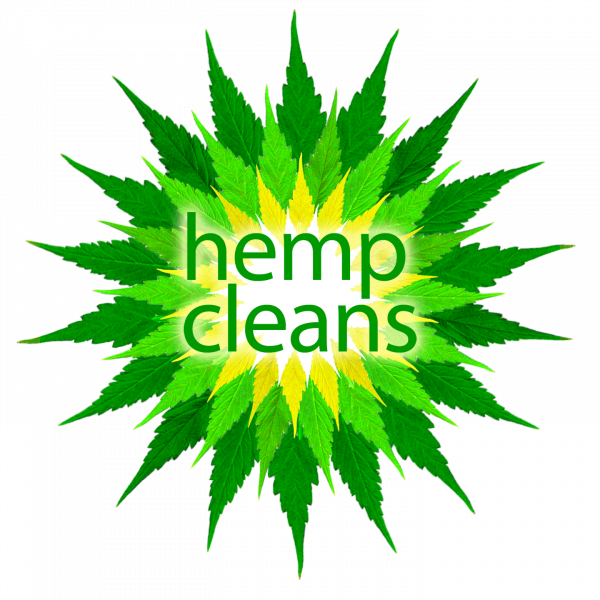
There are many things we can do to alleviate the pressure on the environment around us, such as making sure the vehicle you use doesn’t have an oil leak, pick up the trash you see on your walks, petition to grow food in your front yard and reduce the amount of manicured grass lawns, slow down the stormwater from your home by using a rain capture system or by diverting rain spouts into gardens. Make sure your soil is covered with strong-rooted plants, as this will reduce erosion and keep important nutrients from washing away, increase absorption into the local soils, and reduce pressure on overflow drainage systems in your city or town. Cutting back on growing lawns will reduce fertilizer runoff into the streams and waterways. We really can make a difference and do something to help our environment without a sacrifice of our quality of life, in fact, it will improve health, happiness and community connections. Make the best of the water as it flows through our environment.
Additional Information
Cadmium is toxic and must be handled carefully. Unfortunately, most batteries are thrown into the trash when they are used. If and when it enters the food system, the metal will cause health effects such as decreasing the density of our bones, stomach pains, severe vomiting, diarrhea, bone fracture, psychological disorders, cancer, and damage to reproductive systems, our central nervous system, immune system, and possibly our DNA. Marine life, especially freshwater, mussels, oysters, shrimp, lobsters, and fish tend to be susceptible to cadmium poisoning.
Some ubiquitous heavy metals, especially Pb, have however limited availability for plant uptake due to complexation with solid soil fractions (Rieuwerts et al. 1998). For example, in every contaminated soil, we have examined with sequential extractions, no or a very small fraction of total soil Pb was present in a form (in soil solution or exchangeable from soil colloids) directly available to plants (Leštan and Grčman 2001).
Chelates and barriers
Recent evidence suggests that the addition of chelates to the soil (i.e. ethylenediamine-tetracetic acid (EDTA) and structural analogs) increases the phytoavailability of Pb and other heavy metals by forming water-soluble chelate-heavy metal complexes.
Kos and Leštan (2003) showed that the leaching of heavy metal complexes through the soil profile could be efficiently prevented by using ethylenediamine-disuccinic acid (EDDS) instead of EDTA, and placing a horizontal permeable barrier below the layer of treated soil. Barriers were composed of reactive materials that facilitate microbiological degradation of EDDS-heavy metal complexes and retain the released heavy metals. EDDS is an easily biodegradable, low-toxic chelate with a strong chemical affinity to Pb and other heavy metals and produces benign degradation products (Jaworska et al. 1999).
Since phytoextraction is a long-term technology, it is imperative to keep fields undergoing phytoremediation production to achieve economically viable and socially acceptable levels of decontamination. Multi-use planning is highly encouraged to maximize functions while benefitting the environment and minimizing costs. The industrial uses of plants, such as energy crops for biodiesel production, are therefore the prime candidates as phytoextraction plants.
Updated: 27 September 2019
